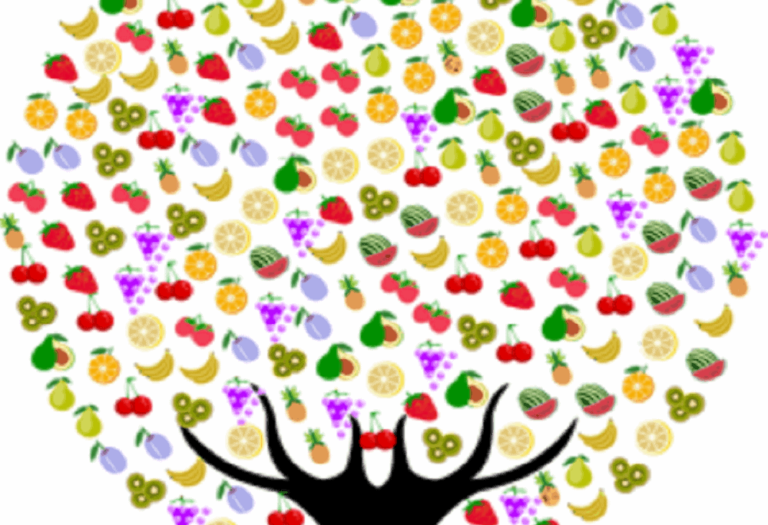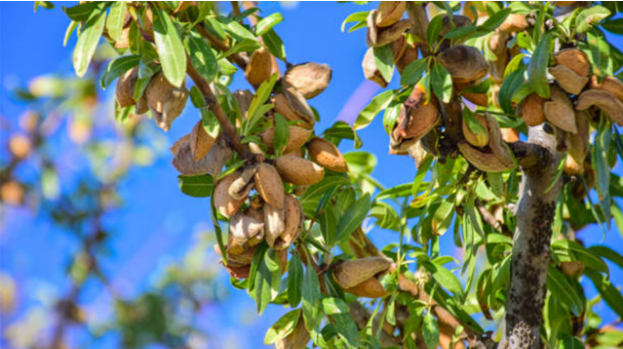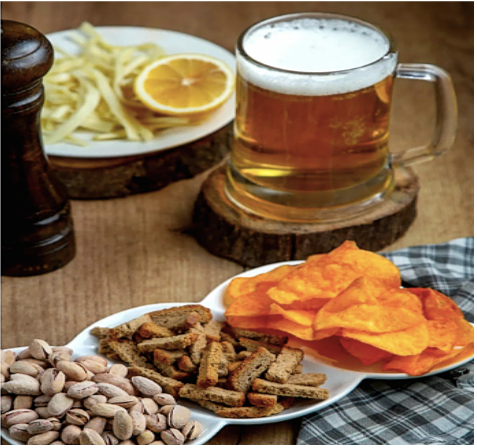Your cart is currently empty!
Food Riots – A History Of And Types Of Food Riots
A food riot can be defined as any planned or spontaneous gathering that may begin peacefully but evolves into disorder. This often can lead to loss of control, violence, bodily harm, or property damage. Many understand and discuss “food disturbances” as the combination of either “food riots” and/or “food protests”. Food disturbances occur for obvious reasons: People will riot because they feel a breach in their sense of an adequate food supply. They will go to extreme measures to get the quantity and quality of food they need for their families.
Historical and archaeological evidence documents food riots in all parts of the world for thousands of years. Food riots have occurred most frequently in the modern era (sixteenth through eighteenth centuries), declined through the nineteenth and twentieth centuries, and increased again toward the end of the twentieth century, primarily in developing countries.
Types of Food Riots

Since it is a strong component and shaper of identity, food is deeply connected to our individual sense of identity. How and why foods accrue special meaning makes them unique to particular groups of people. Foods can vary widely: method of preparation, long-held tradition, “flavor principles,” religious, cultural, or political significance, or any combination. People find specific meanings associated with the restriction of the availability of foods. Whether through government manipulation or the vicissitudes of a “free market” economy, it can catalyze collective protest. This is true not only in isolated communities of the past but also in global villages of the twenty-first century.
A major subfield in social history, a rich body of scholarly work both documents and theorizes about food disturbances. Specifically, European social historians have set the standard for scholarship in the field. While no two riots are ever the same, and each contains a multiplicity of circumstances, historians have generalized ideas. In the past food, riots have fallen into three main categories. First, a blockage or Entrave, where protesters blocked grain or other foodstuffs shipped from one region to another. Second, the price riot or taxation populaire, where peasants seized goods from retail shops whose prices were deemed too high. Many would then sell for a “just price,” and pay back the merchant with the money. The final form of food riots, the market riot, was simply looting stores and supply depots to protest high prices or the lack of goods.
Types of Food Riots In Modern Time
Modern-day riots tend to conform to the latter category of market riots, as looting and destroying property are common factors. They also will have the more calculated, less volatile demonstrations where they dump the food at issue ceremoniously. This would be on the grounds of, for example, the local government headquarters. Food has long been a weapon of war and still continues to be today.
The boycotting of food, a common means of protest in the twentieth century, can be effective. This is especially true when centered on one item, such as milk, beer, or bread, or on a single manufacturer. Boycotts, however, can evolve into full-fledged food riots if participants harass or violently attack those choosing to purchase a targeted item or frequent a targeted store.
Theories of Food Rioting

Why do people riot over food? The obvious answer would be they riot because they are hungry. Although, this does not begin to answer the question since most who are poor and hungry do not riot. What intervening variables determine who eventually riots over which foods? Historians have analyzed and explained food riots in various ways, including as collective action representing “The Moral Economy” of an era, as part of a so-called “female consciousness,” and as an exhibition of nationalism/patriotism. In his 1971 article, “The Moral Economy of the English Crowd in the Eighteenth Century,” eminent British historian E.P. Thompson sets about to provide a “thick description” of food rioters’ motives in preindustrial England. This was in an era when subsistence riots happened with great frequency.
English peasant bread riots were symptomatic of a society caught between changing economic and political forces. This was of an England in the midst of moving from a looser collection of landed gentry to a stronger state and from a mercantilist, feudal economic system to one of laissez-faire market capitalism. The feudal system used peasants to have bread sold at “just prices”. Many viewed this as an amount reduced for the poor as part of the communal moral ethos. In the shift to a market economy that abandoned the “just price”, peasants understandably clung to the older “moral economy.”
This created viewing inexpensive bread prices as an entitlement. Peasants would riot when they felt the long-held social pact was not being honored under the new system. People, argues Thompson, were thus not just rioting because they were hungry but also out of a sense of injustice.
The Change To Industrialization

As the peasantry evolved into the industrialized working class, conflicts over food were absorbed into and displaced by organized labor strikes. Many believe this explains why food riots diminished considerably in the nineteenth century and beyond. Scholars have taken issue with Thompson’s moral economy theory, but few, if any, reject his theory outright.
Since women and men participated in food riots, historians have employed gender as a category of analysis. Although not disagreeing with the moral economists, historians such as Temma Kaplan point out certain ideas of question. For example, although the number of food riots decreased in the nineteenth century, food disturbances nevertheless continued. Moreover, they argue, food rioting took on a noticeably female persona. This was partly because labor unions, the new locus of collective action, largely excluded women.
Kaplan studied early-twentieth-century food riots in Barcelona. She argues that women participated in food riots because of their sexually divided role in labor. Women cared for the home and family, which included food procurement and preparation. Many would radicalize women with methods accepting the traditional division of labor. These women would then go into action in the public sphere. They would take action when prevented from fulfilling their moral obligation, especially the feeding and care of their families.
American Riots
Food riots can also be examined in light of cultural meanings of consumption and their connection to nationalism. Historian Timothy Breen explores the relationship between the growth of national consciousness and the American colonial rejection of British manufactured goods, including foodstuffs. Manufactured goods imported from Britain, readily available to so many people, Breen argues, resulted in a standardization of taste that transcended (to some extent) class boundaries.
Consumer goods became politicized in the decades leading up to the American Revolution. This provided a “shared language of consumption” that colonists of all regions and classes could understand and identify with. It then further provided a common experience and knowledge base that united them enough to wage war against the country. While Breen does not limit his analysis to food but explores the meaning of consumer goods, he focuses on the struggle over tea and its culminating food protest, the Boston Tea Party.
During the American Revolution, riots came to be commonplace. Between 1776 and 1779, food shortages caused over 30 food riots in the American colonies. Angry men and women accosted merchants who hoarded, overcharged, or monopolized coffee, tea, sugar, or flour. Women led many of the food riots during the American Revolution.
Modern-History Food Rioting

Protestors have always created food riots throughout the nineteenth and twentieth centuries. Governments attempting to repay bank loans must enact draconian measures. The current protestors riot because of the strict economic austerity plans forced on developing countries by the International Monetary Fund (IMF) and other international banks. This includes abandoning the tradition of subsidizing staple foods such as bread, rice, and cooking oil.
High prices, deflated wages, scarce resources, and shrinking food supplies have led to riots. All of which included the looting and pillaging of stores, fast-food restaurants, and supply depots. On top of this, the blockading of farm/supply trucks and protests in town squares progress to mayhem and violence. Often the protests and riots have centered on one food item, usually a staple or key ingredient (often with a tradition of subsidization by the government) integral to the culture’s cuisine and consumed by rich and poor alike: rice, tortillas, onions, peanuts, bread.
The item, so central to their food habits, has functioned as a symbol of people’s intense frustration and anger at being trapped in a global economic web where they seem to have no agency. Social scientists John Walton and David Seddon note similarities between these recent austerity riots and those of the preindustrial European peasantry. Each era of food rioting, they argue, includes a context of burgeoning urban metropolises, severe economic hardship, and populations with a strong sense of moral economy that regards subsidized food prices as a government obligation.
Food Rioting Today (Ukraine & Israel)

With the current state of wars, modern riots are nothing short of prevalent. Russia has decreased Ukraines grain supply by 29% from 2022 to 2023. Considering that Ukraine is a large-scale provider of grain to several countries in Europe, this has caused a foundation for issues and unrest to arise. With reduced grain exports, higher food prices occur across the country in more categories than just grain.
Before the war, 90% of all of Ukraines food exports were distributed by Sea, now, this has been brought to essentially an entire halt with the war creating such a danger around port systems. This has created a negative cycle loop that is compounding harm on the economy and the ability to get resources. Because Ukraine also grows so many sunflower seeds, they were Europe’s number 1 exporter of sunflower oil before the war. Ukraine also supplies more than just Europe with natural resources. Parts of Asia and Africa would heavily rely on Ukraine for grain before the war to which now has created further famine across several countries, more so than just Ukraine itself.
This has created room for many riots to be sighted as the search for solutions is becoming increasingly desperate. Further, rather than semi-violent rioting, people are killing others in this state of war over the shortage of food and resources and reclaiming freedom. Ukraine has spent over $100 billion of its own currency as well as military aid to contribute to this war and has had an estimated 14,000+ casualties. The shortage of food has no solution proposed near in sight, creating further room for damage as time passes.
Israel And Palestine

The most recent occurence of history has been the war of Israel And Palastine. With the bombing going on in Gaza this has caused nothing short of a famine among many of the Palestinians. The Palestinians have a philosophy in which they say “bread is life” in accordance with their culture. Israel has shut off power to much of the Gaza Strip, resulting in a low supply of water as well as food. Bakeries are seemingly running out of the sole source of bread in many communities.
The people have reacted helplessly, further becoming enraged with the act of war. The injury toll is currently around 10,000 alone in Gaza, with a combined 3,000 death toll among both societies. Retaliations of war back and forth stretch further as food is being weaponized as a point of famine. Israel is in the current attempt to shut of all supplies to Gaza, which will further leave them helpless. The WPF indicates that roughly a third of the Gaza Strip’s population was already in a position of food insecurity. This will result in further drastic action taken as things will need to change to promote a sustainable society.
Many can only hope for a quick solution to bring back food and resources and minimize the detriment of war among one another. Foreign aid involves with both parties. This ideally could create a fair solution for both sides of in a timely manner, although only history will tell what the future holds in place.
Blog Assisted By rzwilliams.com







